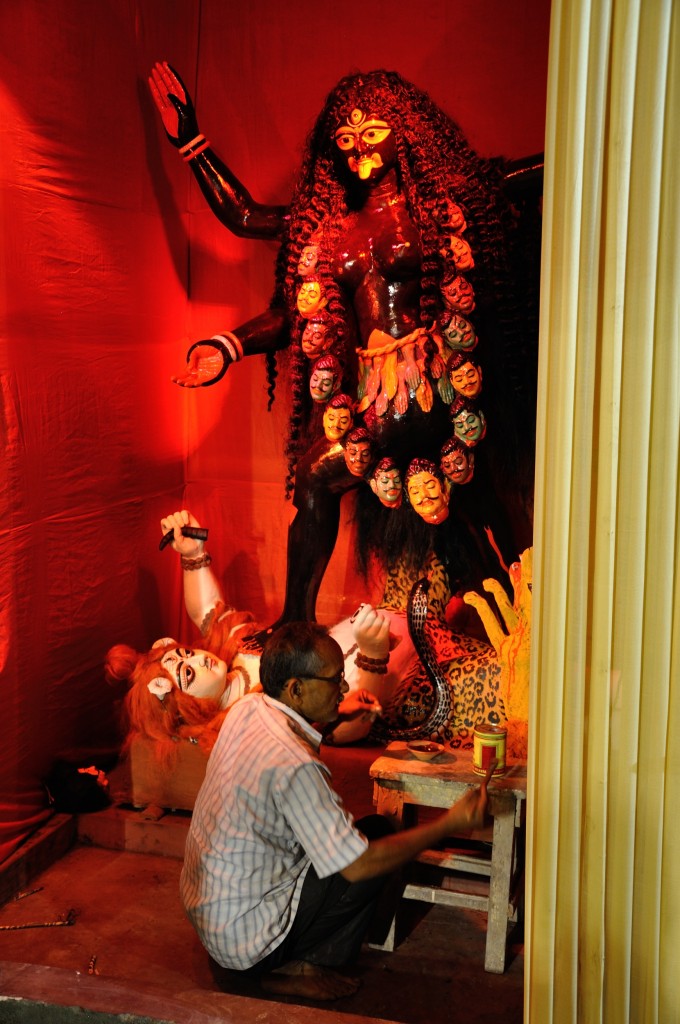From practically the first moment since I stepped off the plane in Kolkata in late August, people have been telling me to visit the town of Krishnagar. Last week I had the opportunity to visit there with a group of artist friends. Krishnagar is famous for the production of highly realistic sculpture, from larger than life to extremely minature sculptures.
We visited with local sculptor Subir Pal, who has both a shop on the main road for his finished works, as well as a workshop that is just a short walk down a small alleyway near the shop.
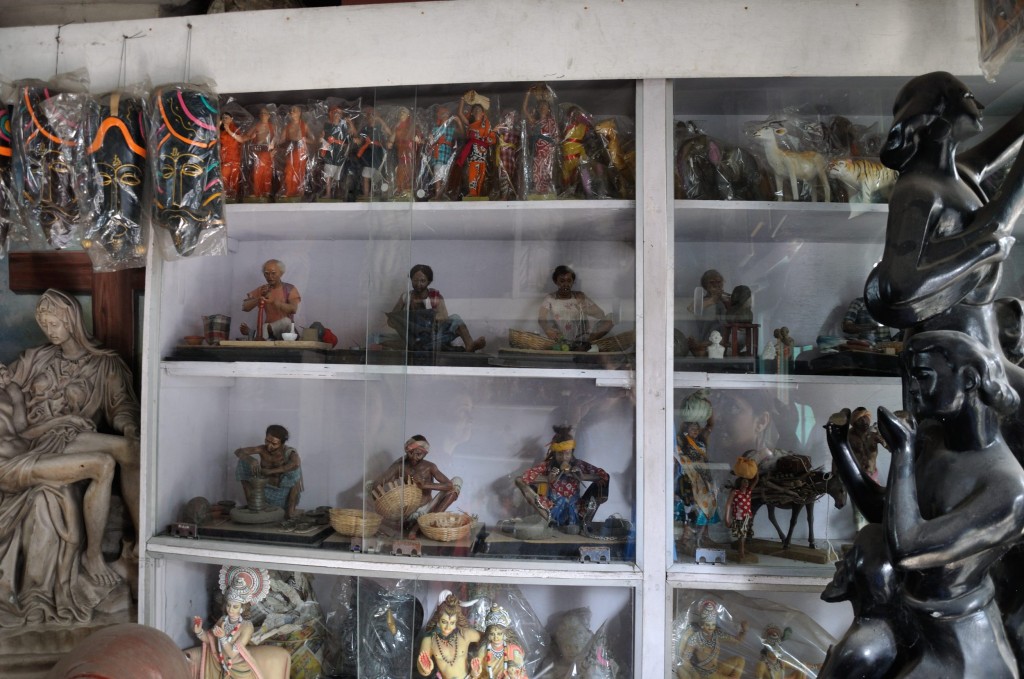 Subir Pal’s showroom with cabinet of narrative clay works
Subir Pal’s showroom with cabinet of narrative clay works
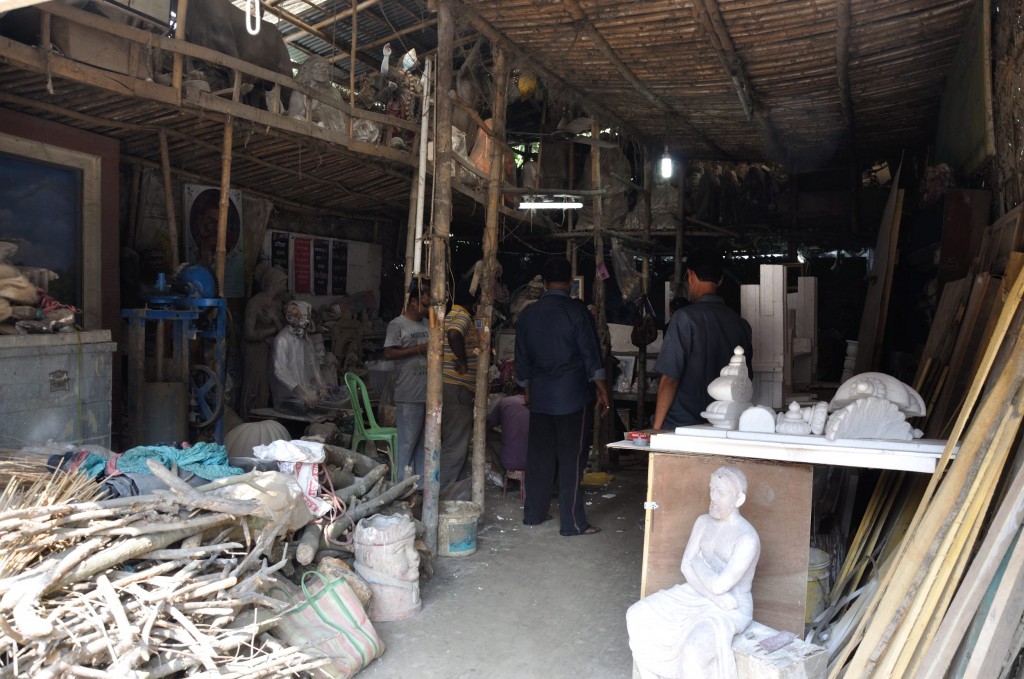 His workshop
His workshop
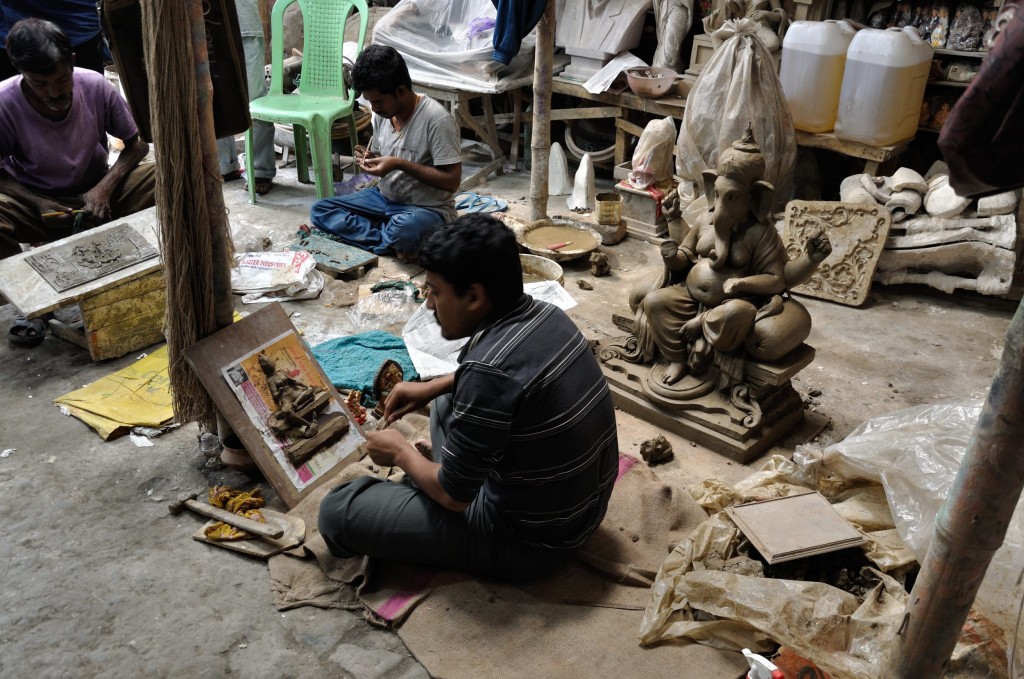 Workers and apprentices busy with their various tasks.
Workers and apprentices busy with their various tasks.
 Subir Pal with work in process
Subir Pal with work in process
Subir Pal also works in fiberglass (as well as stone, plaster, bronze, and cement). Check out this cow – sculptural trompe l’oeil – in the photo above. Photo below, another cow sculpture is stored in the workshop loft.
In the alleyway between workshop and showroom, we encountered the raw, unprepared Krishnagar clay, loaded up onto a bicycle cart
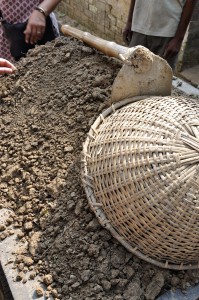
According to Subir Pal, this clay is so dense that it is as hard as stone without being fired! I remain skeptical, but hopeful, since he generously gave me a big chunk of the clay to try it out!
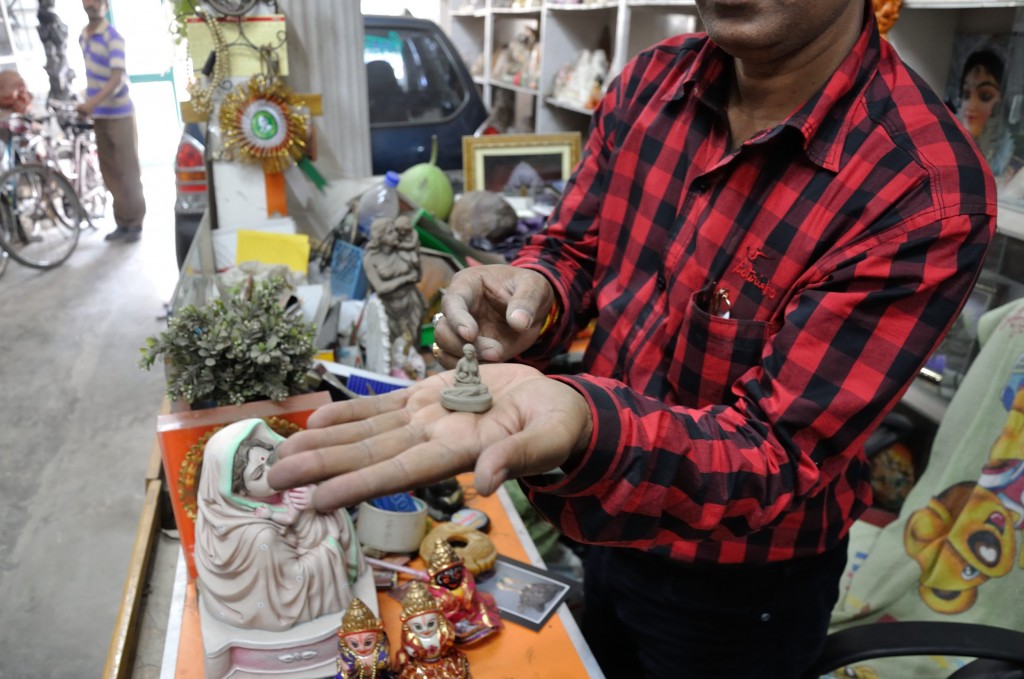 These minatures are really amazing!
These minatures are really amazing!
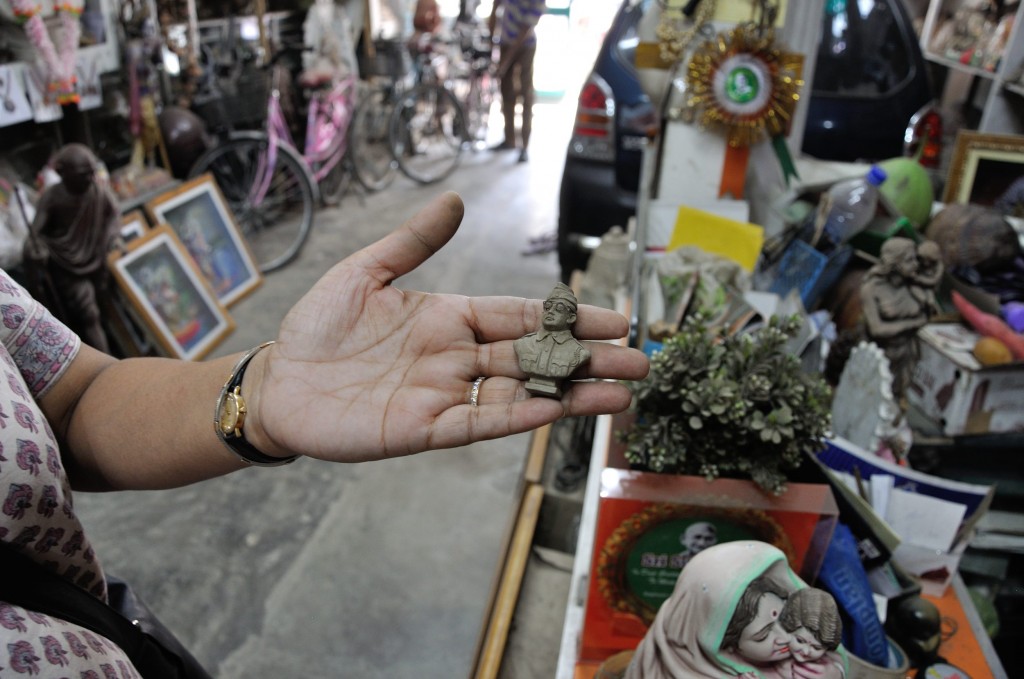
Below, Subir Pal’s “artist’s reserve” of minature sculptures. Wow.

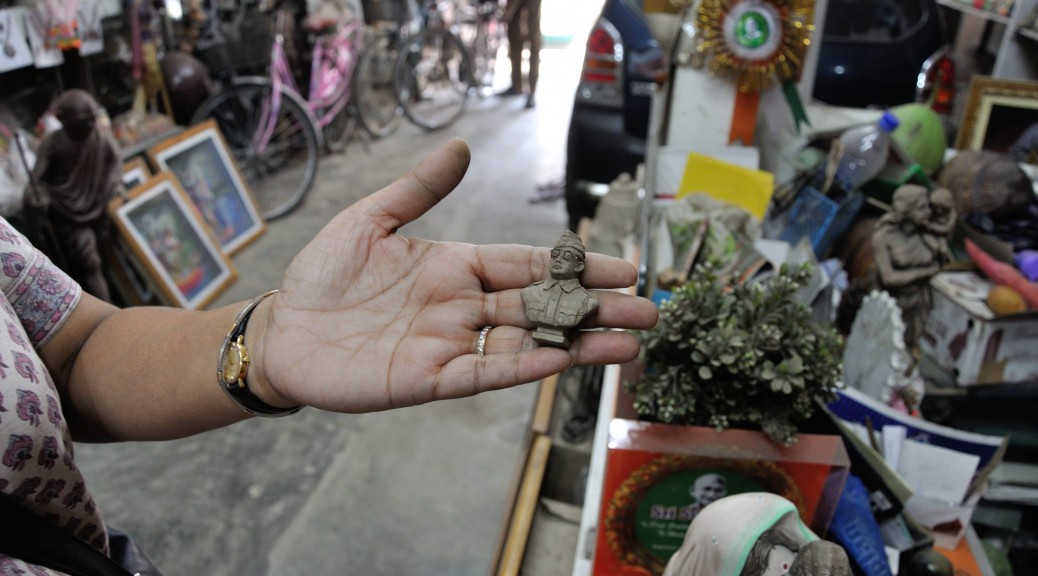

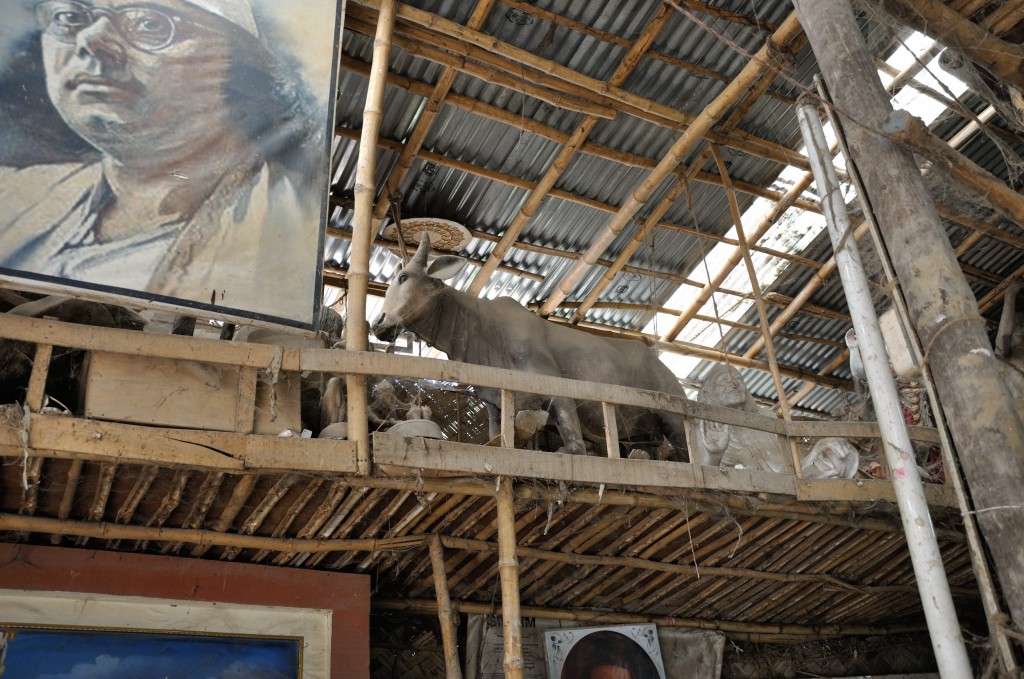
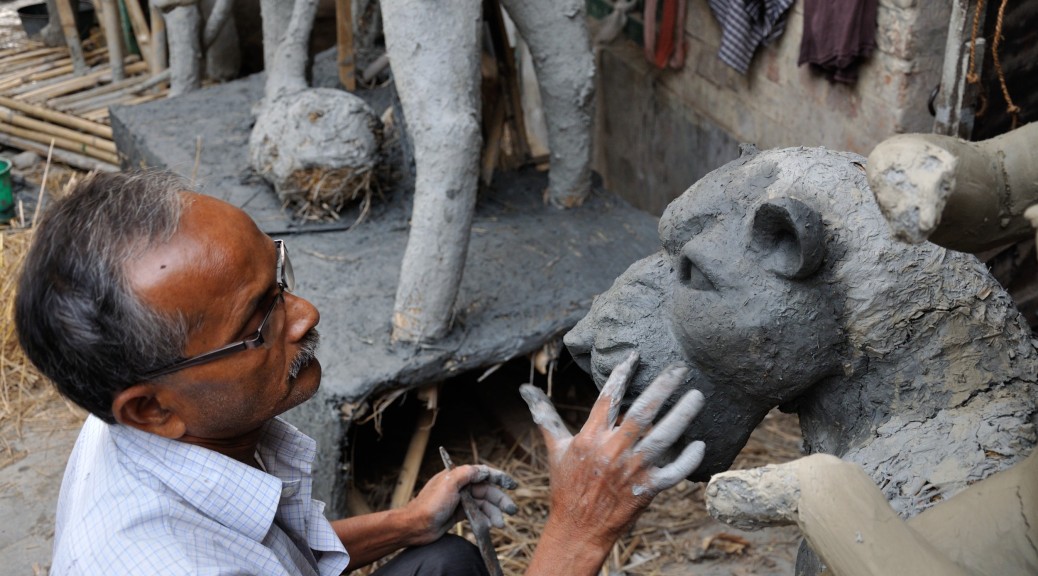
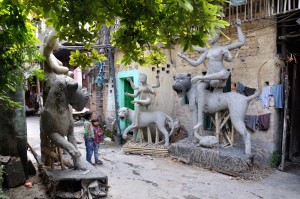
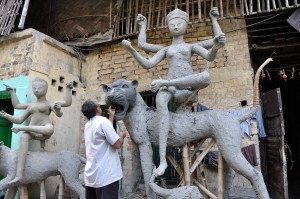
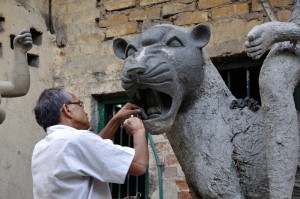


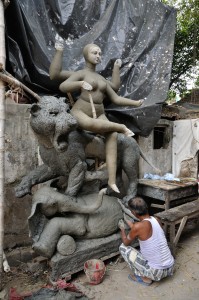
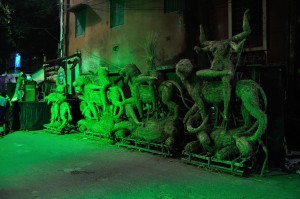


 her very active gesture of stomping on her consort Lord Shiva (other interpretations are that of accidentally doing so, and also that her foot on his body calms her anger).
her very active gesture of stomping on her consort Lord Shiva (other interpretations are that of accidentally doing so, and also that her foot on his body calms her anger).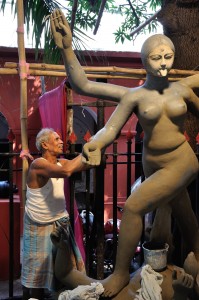 Once the figures of Kali and Shiva had been formed in straw, they moved them to the street outside of the Shovabazar Rajbari, just next to a tiny Shiva shrine. Over the next several days, a bamboo, cloth and paper pandal was built over and around the figures. I enjoyed observing this process immensely, because simply by being present in the situation, I became part of the rhythm of the street.
Once the figures of Kali and Shiva had been formed in straw, they moved them to the street outside of the Shovabazar Rajbari, just next to a tiny Shiva shrine. Over the next several days, a bamboo, cloth and paper pandal was built over and around the figures. I enjoyed observing this process immensely, because simply by being present in the situation, I became part of the rhythm of the street.

